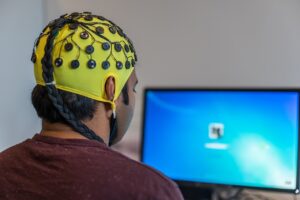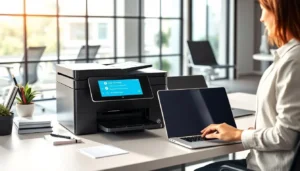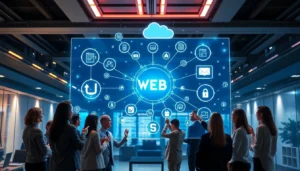Deno: The Modern Runtime for JavaScript and TypeScript Development
Introduction
Deno has quickly gained attention as a fresh way to run JavaScript and TypeScript code. It offers a more secure, faster, and developer-friendly environment compared to older runtimes. Many programmers are turning to Deno because it simplifies building all kinds of apps—from web servers to CLI tools. In this article, we’ll explore what makes Deno stand out, how it performs, and why it might be the right choice for your next project.
What is Deno? An Overview of the Modern Runtime
Definition and Origins
Deno was created by Ryan Dahl, the mind behind Node.js. He designed Deno to fix the problems he saw in Node.js, such as security issues and complex setup. Ryan wanted a runtime that was safer, easier to use, and more modern. So, Deno was born as a fresh start built from scratch.
Core Philosophy and Design Principles
The main idea behind Deno is simplicity combined with security. It focuses on making development safer and easier without sacrificing features. Deno has a built-in toolset, supports modern JavaScript and TypeScript, and keeps your code clean and easy to manage. Modularity is key—developers can import what they need directly via URLs, avoiding messy package managers.
Key Features
- Secure by default: Deno asks for permission before accessing files, network, or environment variables.
- Built-in package management: Modules are imported directly from URLs, no need for npm.
- Supports TypeScript out of the box: Write in TypeScript without extra configuration.
- Single executable: Deploy your app easily as one file, which makes sharing and running simple.
Deno’s Features and Architecture
Runtime Environment and Core Architecture
Deno runs on the V8 JavaScript engine, which is also used by Chrome. It’s built using Rust, a fast and safe language, to boost performance. Its architecture is modular, with a standard library full of common tools and APIs. This setup makes Deno fast and reliable.
Built-in Security
One of Deno’s strongest points is its permissions system. Without explicit access, your code cannot read files, browse the net, or access environment variables. This setup bugs developers less about security gaps and protects users better.
TypeScript Support
Deno treats TypeScript as a first-class citizen. Developers can use TypeScript without setting up extra tools. It compiles TypeScript on the fly, which saves time and improves code quality by catching errors early.
Standard Library and Tooling
Deno offers a standard library with helpful APIs—think of it as a toolbox for common tasks. It also comes with built-in tools like formatters, linters, test runners, and bundlers. These tools make development smoother and faster.
Compatibility and Ecosystem
While Deno favors URL modules, it also plays well with existing JavaScript modules. It supports npm packages through import maps or special loaders. This flexibility means you can gradually adopt Deno without losing support for your favorite libraries.
Performance and Efficiency of Deno
Benchmark Comparisons
Tests show Deno often outperforms older runtimes like Node.js, especially in startup time and handling many simultaneous connections. It’s built to get your code running quickly and stay responsive under load.
Use Cases Demonstrating Performance
Deno works great for web servers, command-line programs, and microservices. For example, developers built efficient REST APIs and stats dashboards with Deno, thanks to its speed and stability.
Scalability and Resource Management
Deno handles many async tasks smoothly, thanks to its event loop design. Its memory footprint tends to be lower, which helps run apps on smaller devices or cloud functions without crashing.
Use Cases and Applications
Web Development
Deno shines in building web APIs and servers. Frameworks like Oak, inspired by Express, make it easier to handle routing and middleware.
CLI Tools
Create quick, secure command-line tools with Deno. Its simplicity and built-in features reduce development time for scripts and apps.
Microservices and Serverless
Deno fits well into cloud environments. It runs efficiently in serverless setups, helping deploy small, fast microservices without fuss.
Education and Rapid Prototyping
Because Deno is simple to learn and set up, it’s perfect for teaching JavaScript or TypeScript or trying out new ideas. You can build prototypes fast, test concepts, and move on.
Deno’s Ecosystem and Community
Current Ecosystem Status
While smaller than Node.js, Deno’s ecosystem is growing. Libraries like Drash and Opine are popular frameworks. More contributors help extend its capabilities daily.
Community Support and Resources
Official docs are thorough, and forums buzzing with questions and answers. Plus, YouTube tutorials, courses, and GitHub projects make learning Deno easier for everyone.
Future Developments and Roadmap
Deno team plans to make package management smoother, support WebAssembly better, and improve compatibility with browser APIs. Industry adoption is catching on as more companies test and deploy Deno-based apps.
Conclusion
Deno offers a fresh take on JavaScript and TypeScript runtimes: secure, fast, and simple to use. Its modern architecture, built-in tools, and first-class TypeScript support make it a compelling choice for developers. Whether you’re building web apps, CLI tools, or microservices, Deno’s features can enhance your projects. It’s worth exploring Deno soon—your next big project might just benefit from its modern approach. Keep an eye on how this runtimes community grows, as it looks set to keep pushing boundaries in JavaScript development.



































































































